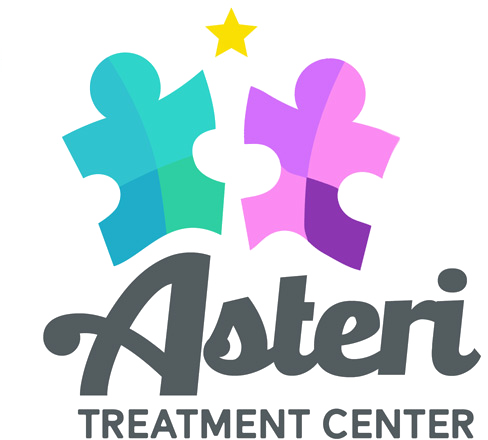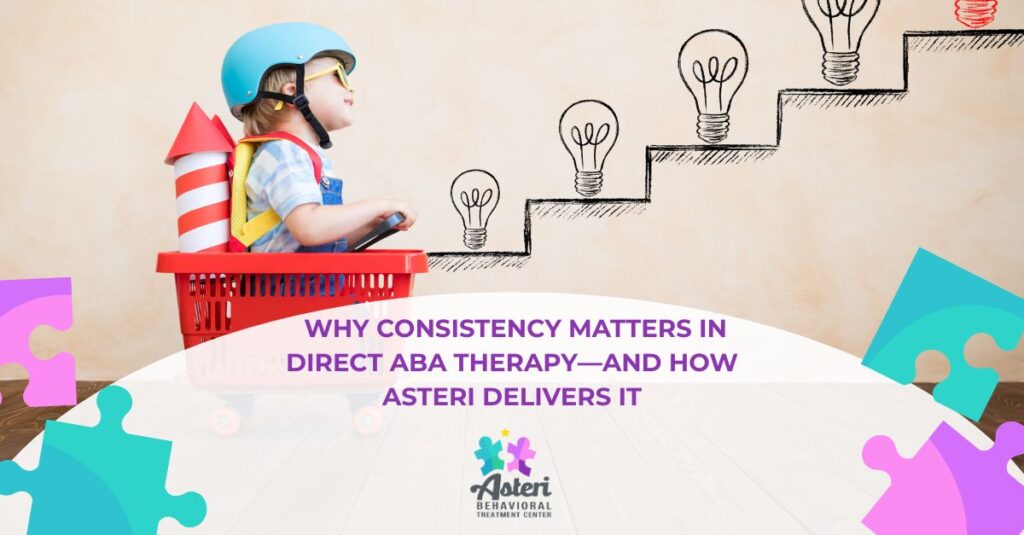When parents first explore Applied Behavior Analysis (ABA) therapy for their child, they often focus on finding the right center or the most qualified therapists. While these factors are undeniably important, there’s another element that can make or break a child’s progress: consistency. Consistency in direct ABA therapy isn’t just about showing up for appointments. It encompasses consistent therapy hours, maintaining the same therapist-child pairing over time, and delivering uniform approaches across all sessions. This foundation creates the stable environment children need to learn, grow, and achieve meaningful behavioral changes.

Research consistently shows that children with autism spectrum disorder and other developmental challenges thrive when their learning environment remains predictable. Yet many families struggle to find ABA providers who can deliver this level of consistency. Understanding why consistency matters—and how to identify providers who prioritize it—can transform your child’s therapeutic journey.
The Science Behind Consistency in ABA Therapy
Direct ABA therapy relies on the principles of applied behavior analysis, which uses evidence-based techniques to teach new skills and reduce challenging behaviors. At its core, ABA therapy works by creating clear patterns of antecedents, behaviors, and consequences. When these patterns remain consistent, children can more easily understand expectations and internalize new behaviors.
Inconsistency disrupts this learning process. When therapy hours fluctuate dramatically, when different therapists use varying approaches, or when sessions occur at unpredictable times, children must constantly readjust to new variables. This adjustment period slows progress and can even lead to regression in some cases.
The human brain, particularly the developing brain, learns through repetition and predictability. Consistent therapy sessions allow children to build neural pathways more effectively, leading to faster skill acquisition and better retention of learned behaviors.
Why Consistent Therapy Hours Make a Difference
Regular therapy hours serve as the foundation for effective ABA intervention. When children receive the same amount of therapy each week at predictable times, several benefits emerge.
Establishing Routine and Reducing Anxiety
Children with autism often experience heightened anxiety when their routines change unexpectedly. Consistent therapy hours help establish a predictable schedule that reduces stress and allows children to mentally prepare for sessions. When they know therapy occurs every Tuesday and Thursday from 3:00 to 5:00 PM, they can transition more smoothly into learning mode.
Maximizing Learning Opportunities
Consistent hours ensure that children receive adequate exposure to therapeutic interventions. Sporadic sessions or frequently changing schedules can create gaps in learning that slow overall progress. Research suggests that children who receive consistent therapy hours show faster skill acquisition compared to those with irregular schedules.
Supporting Family Planning
Families also benefit from predictable therapy schedules. Parents can better manage work commitments, sibling schedules, and household responsibilities when they know therapy hours remain stable week to week.
The Power of Consistent Therapist-Child Pairing
The relationship between a child and their ABA therapist forms the foundation of successful intervention. This therapeutic relationship takes time to develop, requiring trust, understanding, and familiarity on both sides.
Building Rapport and Trust
Children need time to feel comfortable with their therapist before optimal learning can occur. When children work with the same therapist consistently, they develop trust and rapport that enhances their willingness to engage in challenging tasks and try new skills. Frequent therapist changes force children to restart this relationship-building process repeatedly.
Understanding Individual Needs
Each child presents unique learning styles, motivations, and challenges. Experienced therapists learn to recognize subtle cues about when a child is frustrated, engaged, or ready for a break. They understand which reinforcement strategies work best and can adjust their approach based on the child’s daily mood and energy level. New therapists must spend considerable time learning these individual characteristics.
Maintaining Treatment Consistency
When the same therapist works with a child over time, treatment approaches remain more consistent. The therapist understands the child’s current goals, knows which strategies have been successful, and can build upon previous sessions effectively. Frequent therapist changes can lead to repetition of previously mastered skills or inconsistent implementation of behavior plans.
Data Collection Accuracy
Consistent therapist-child pairing also improves the accuracy of data collection. The same therapist becomes skilled at recognizing and recording the child’s specific behaviors, leading to more reliable progress monitoring. This accurate data helps treatment teams make informed decisions about program modifications.
How Asteri Delivers Unmatched Consistency
At Asteri Treatment Center, consistency isn’t just a goal—it’s a fundamental principle that guides every aspect of service delivery. Understanding that consistency directly impacts treatment outcomes, Asteri has developed comprehensive systems to ensure stable therapy experiences for every child.
Structured Scheduling Systems
Asteri maintains consistent therapy hours through careful scheduling and adequate staffing. Families receive predictable weekly schedules that remain stable throughout treatment. When schedule adjustments become necessary, families receive advance notice whenever possible, and the center works to minimize disruptions.
Thoughtful Therapist Matching
The center’s approach to therapist-child pairing goes beyond simple availability. Asteri considers factors such as the child’s personality, learning style, and specific needs when making initial pairings. Once established, these therapeutic relationships are protected and maintained whenever possible.
Comprehensive Staff Training
All Asteri therapists receive extensive training in the center’s treatment protocols and data collection procedures. This standardized training ensures that when therapist changes do become necessary, new therapists can maintain treatment consistency more effectively.
Ongoing Professional Development
Regular training and supervision help therapists continue developing their skills while maintaining consistent approaches with their assigned children. This ongoing development benefits both therapists and the children they serve.
The Real Impact: What Families Experience
The benefits of consistency in direct ABA therapy extend far beyond theoretical advantages. Families working with consistent providers report several tangible improvements in their children’s progress and their own experiences.
Children demonstrate faster skill acquisition when they work with the same therapist consistently. They show less resistance to therapy sessions and display more willingness to attempt challenging tasks. Parents report that their children seem less anxious about therapy and often look forward to sessions with familiar therapists.
Families also experience reduced stress when therapy schedules remain predictable. They can better manage their daily routines and feel more confident in their child’s treatment progress. Communication between families and therapists improves when relationships have time to develop, leading to better collaboration and more effective home programming.
Overcoming Common Consistency Challenges
Despite the clear benefits, maintaining consistency in ABA therapy presents real challenges. Therapist turnover, illness, scheduling conflicts, and other factors can disrupt even the most well-planned programs.
Addressing Therapist Turnover
High turnover rates plague many ABA providers, but centers committed to consistency develop strategies to retain quality staff. This includes competitive compensation, professional development opportunities, manageable caseloads, and supportive work environments.
Planning for Inevitable Changes
When therapist changes become unavoidable, effective providers implement transition plans that minimize disruption. This might include overlapping sessions where the new therapist observes the current therapist, detailed handover documentation, and gradual transition periods.
Backup Systems
Quality providers maintain backup systems to cover absences and emergencies without disrupting therapy schedules. This requires adequate staffing levels and cross-training of therapists on multiple cases.
Your Path Forward with Consistent ABA Therapy
ABA Therapy (Applied Behavior Analysis) utilizes proven science to identify how certain behaviors are influenced by environmental variables, with a focus on societal significance. The goal of this therapy is to develop, over time, to program a behavior change, whether it’s starting, altering, or even eradicating a behavior.
When you’re evaluating ABA providers, consistency should rank among your top priorities. Ask potential providers about their approaches to maintaining consistent therapy hours and therapist-child pairings. Inquire about their staff retention rates and strategies for handling transitions when they become necessary.
Asteri Treatment Center is here for you. Our commitment to consistency, combined with evidence-based practices and individualized treatment approaches, creates the optimal environment for your child’s growth and development. Contact us today to learn more about how consistent, high-quality direct ABA therapy can support your child’s journey toward reaching their full potential.

